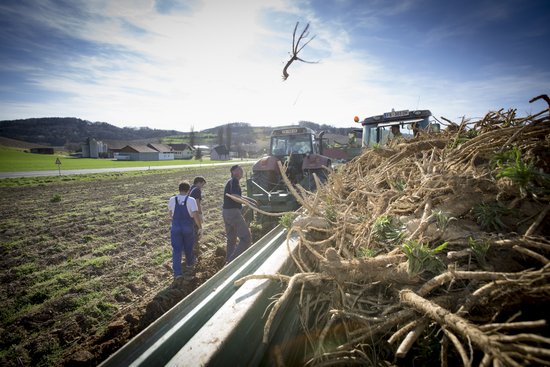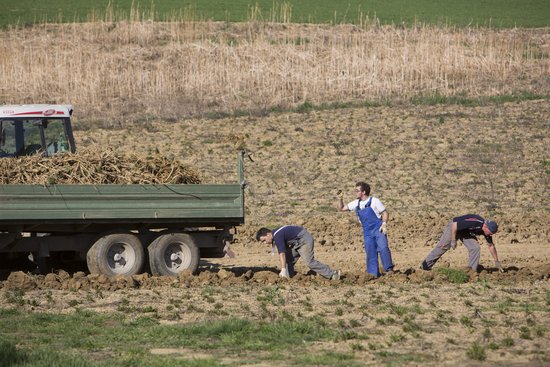SteirerKren
The harvest.
The harvest takes place in two stages: in late autumn after the first night frost and in the spring. When the leaves begin to die off the root growth has stopped. Since Styrian horseradish PGI is hardy, the harvest can be carried out from autumn until the new sprouting of the roots.
The double harvest in spring and in autumn means that part of the harvest stays in the ground through the winter, because the flavour of the horseradish is retained if stored cold in the ground. This natural cold storage saves energy and warehouse costs.
The horseradish harvest takes around 1,000 working hours per hectare, because even today much of the work is done by hand. A reinforced, extra-robust potato harvester is usually used for the harvest. This can dig 40cm underneath the planted horseradish rows, thus loosening the soil. Workers behind the tractor lift the roots up and put them onto a conveyor belt that leads into a container.
After the spring harvest a new crop can be grown. Because Styrian horseradish PGI only forms a small number of seeds, conventional propagation through sowing is not effective. In order to propagate, whole root segments or side-roots are separated off and put back into the soil. Especially well-formed and straight roots are generally chosen for propagation purposes. These selected root segments are roughly the thickness of a pencil and are stored cold in bundles through the winter.
Sustainability you can taste.
From cultivation via preparation to packaging material, we guarantee short transport distances and gentle processing. Thanks to the short transport distances, the horseradish roots are subject to less stress, which enables better quality and more sustainable production to be guaranteed.

